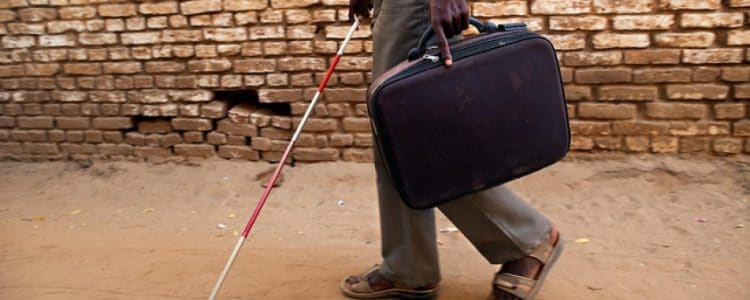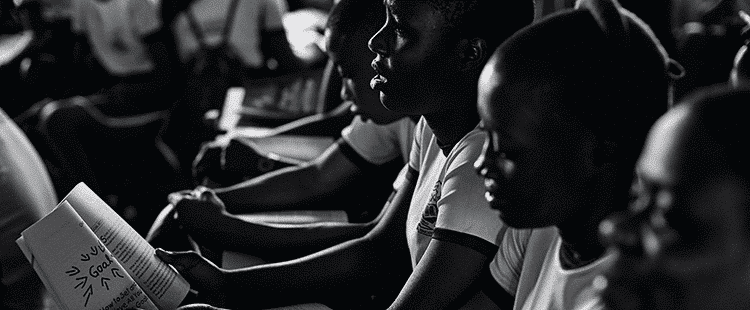
With only a quarter of the world’s population having access to social protection, the case for expanding it is gaining ground in international discussions. The debate focuses on how best to design social protection, whether it should be universal or targeted at the poorest groups, and who should provide it and finance it.
Social protection is a policy tool traditionally used to protect people or households from income shortfall or poverty when confronted with contingencies like illness, job loss or the impact of an economic crisis. Today, while social protection is under pressure from austerity policies in Europe, many commentators argue that, in developing countries, the significance of social protection is increasingly linked to its potential to stimulate productivity and promote inclusive growth (see also the article Social protection for inclusive growth at The Broker). Others advocate it on more moral grounds. Various types of social assistance programmes, which are a form of social protection, introduced over the past decade now reach more than 150 million households in developing countries, and an estimated three quarters to one billion people benefit from the programmes.1 Coverage is expanding in some of the world’s most populous countries, including China, India and Indonesia. Although this is drastically increasing the number of people benefiting from some form of social protection, 75 per cent of the world population are not covered by adequate social security.2
In recent years, social protection has increasingly found its way onto the agenda of international organizations. It is, however, a concept burdened with ideology and there are quite a number of important nuances in how different organizations use the term (see the box for definitions). The international discussions hinge on a variety of issues. There are of course staunch proponents and opponents of the welfare state as it developed over the last century, mainly in the West. But it is by no means a simple ‘for or against’ discussion. The core question is: who exactly should be the beneficiaries? Should social protection be provided universally to everybody, or targeted more cost efficiently to the poorest segments of society? We will see that the trend leans towards targeting specific groups, which is generating substantial debate on who to target and how, and whether there should be conditions attached. Closely linked to this is a second issue: how much money can be spent on social protection measures and who should primarily bear the costs? Thirdly, notions about the role of social protection appear to be shifting: from it being purely protective towards a focus on how social policies can promote productivity and inclusive growth.
What is social protection?
Motivations for providing social protection
The reasons for endorsing or promoting social protection policies in developing countries can vary. Devereux and Sabates-Wheeler suggest that proponents of social protection fall into two camps: instrumentalists and activists.7 The instrumentalists point out that extreme poverty and vulnerability frustrate the achievement of development goals. They propose to set up mechanisms for risk management that operate only until the market can allow private insurance to play a more prominent role. The activists consider extreme poverty and inequality as symptoms of structural inequity and social injustice. They see ‘welfarist handouts’ as a necessary step towards ‘the ideal of a guaranteed “universal social minimum”, where entitlement extends far beyond cash or food transfers and is based on citizenship, not philanthropy.’8This viewpoint represents the spirit of a rights-based approach, which says that no one should be excluded from access to social security, regardless of sex, age, marital status, ethnicity, etc.
Increased recognition
According to François-Xavier Merrien of the University of Lausanne, social protection was a very marginal issue in international development debates until the early 1990s.9 It was considered a theme for rich countries and linked to modern wage-earners. However, the ILO had already introduced its ‘Basic Needs Strategies’, promoting social policies, back in the 1970s.
Social protection has now returned to the international cooperation agenda in the context of globalization and the economic crisis, and is also a major issue on the post-2015 agenda. In the first of the five ‘big, transformative shifts’ that the post-2015 agenda should focus on, the High-Level Panel calls for an end to extreme poverty and states that ‘we should design goals that focus on reaching excluded groups, for example by making sure we track progress at all levels of income, and by providing social protection to help people build resilience to life’s uncertainties.’10 In the Open Working Group, the European Union states: ‘While great emphasis must be rightly placed on securing the conditions that will create growth and jobs, decent work and social protection are key elements for ensuring basic living standards and driving inclusive and sustainable growth.’11
Stephen Devereux and Rachel Sabates-Wheeler argue that there is a ‘growing recognition that social protection can be functional to the achievement of bigger development objectives.’12 In his blog post on The Broker, David Hulme, professor of development studies, considers ‘the rise of “social protection” in more than 45 developing countries’ a sign that ‘progressive change is unfolding’.
In June 2012, almost all member states of the ILO supported a recommendation on national floors for security.13 In this official document, the ILO considers social protection floors as ‘nationally defined sets of basic social security guarantees which secure protection aimed at preventing or alleviating poverty, vulnerability and social exclusion’.
According to Frank Hoffer, senior researcher at ILO and one of the authors of the ILO recommendation, such recommendations – though often criticized for being vague and non-binding – do make a difference. ‘These documents do not come out of nothing,’ he says. ‘They express a certain Zeitgeist and are anchored in real practices.’14 Hoffer also believes that this time ‘it is no longer a south-north debate. The kind of social protection floor we want has been pioneered by developing countries, so there is no patronizing.’15
Universal or targeted protection?
Articles 22 and 25 of the Universal Declaration of Human Rights recognize the right to social security for every member of society. This principle, which few people will disagree with fundamentally, does not rule out differences in opinion about who should be the primary beneficiaries of social protection programmes and what their scope should be. Nicholas Freeland, an independent consultant in social protection, distinguishes between those endorsing a ’universalist’ approach to social protection and promoting what he calls ‘a neo-liberal, small state’ approach.16 The most visible advocate of a universalist approach is the ILO, which promotes providing protection against a broad range of risks throughout the lifecycle with the prime objective of not only combating poverty but also tackling inequality. With this fundamental objective in mind the ILO recommends the introduction of ‘a global social protection floor’ (see box). In this context can also be mentioned the proposal by Guy Standing, Professor of Development Studies at the School of Oriental and African Studies, University of London, who suggests that everybody should be granted a basic income.17 This model is clearly universal, but has little prospect of being implemented in the near future. It differs from the other models in focusing not on providing services but on giving money to everyone in the form of a basic income.
The World Bank, on the other hand, is often seen as a proponent of the small-state approach, which is ‘based on the argument that scant resources should be focused on the poorest (…). It is also premised on a belief that “beneficiaries” should do something in exchange for receiving the benefits.’18 Freeland mentions conditional cash transfer programmes in Latin America, Ethiopia’s Productive Safety Net Programme, Indonesia’s Program Keluarga Harapan and Pakistan’s Benazir Income Support Programme as examples based on this idea.
According to Thandika Mkandawire, professor at the London School of Economics and former director of UNRISD, social policies have tilted away from being universal towards being targeted since the 1980s, in both developed and developing countries, as part of an overall change of thinking on the welfare state.19 It could also be argued that the universalist versus targeted debate has essentially become theoretical. Any universal model will, in practice, carry within it elements of targeting because it will always involve a political selection of which groups to support. Freeland, however, maintains that there is an important difference between selecting a group and targeting the aid: ‘The targeting decision comes after the group has been selected – at that stage, you can either target all of them, or you can target only the poorest among them.’20 Armando Barrientos argues that targeting is a simple necessity: ‘No selection of beneficiaries is a non starter in social assistance. If social protection is to help reduce poverty then we need to start from an understanding of who is poor and why.’21
Who should be targeted?
In its 2012-2022 Social Protection and Labor Strategy, the World Bank proposes that ‘well-designed, well-targeted social protection and labor programmes can affordably help households manage risk in the face of shocks.’22 UNRISD has taken issue with the World Bank approach, claiming in its 2010 report Combating Poverty and Inequality, that the Bank ‘remains primarily concerned with market mechanisms of provision, supplemented with narrowly targeted assistance for the most vulnerable.’23 According to UNRISD, the Bank’s ‘market-based’ approaches, including the privatization of health care and pensions and the introduction of user fees for health and education services, have not succeeded in contributing to development by creating more efficient social systems at lower costs: ‘Since premiums and benefits are normally earnings-related and individualized, they tend to accentuate existing labour market inequalities, such as wage differentials between women and men.’24
This observation points at a more fundamental problem with social protection programmes in developing countries, which typically only cover people working in the formal sector. In countries where most people try to earn their living in the informal sector this by definition means that only a very small part of the population has access.
In terms of international and national policy debates, it is clear that the most pressing questions when designing and implementing social protection schemes are: who should be targeted, based on what criteria, with which instruments and which, if any, conditions should be attached? The article ‘Protect – or promote?’ at The Broker gives some insight into these choices at a practical level by examining the different categories of social protection schemes: conditional cash transfers, unconditional social assistance, contributory social insurance and labour market interventions.
Who foots the bill?
Whether the aim is to provide universal social protection or to target support to reach the most vulnerable, the key question at policy level will always be: who will pay? In a briefing note for the UN High Commissioner for Human Rights, Olivier de Schutter, the UN’s Special Rapporteur on the right to food, and Magdalena Sepúlveda, the UN’s Special Rapporteur on extreme poverty and human rights argue that the development model supported ‘by major international institutions has pushed states to lower government spending’ and is a reason for the lack of social protection in poorer states.25 The introduction of a social protection scheme is indeed a major investment, especially for poor countries. The reason that so many people are left out of social protection is not only related to the idea that ‘poor people need incentives to work’ but primarily a result of the simple reality that financial resources are inefficiently allocated, if at all.
Few people, however, would contest that the state has a pivotal role to play in setting the regulatory framework for social protection policies and funding its programmes. As Frank Hoffer puts it: ‘There is an overall and primary responsibility of the state to provide the social protection floor.’26 In a similar vein, UNRISD’s report on social policy states: ‘Achieving universal social protection requires the state to assume key responsibilities in providing, financing, administering and regulating programmes and institutions.’27 Reality however shows that the poorest households in poor countries rely on non-state sources like kin, community and religious institutions and rarely benefit from direct state support.28
In their briefing note, Olivier de Schutter and Magdalena Sepúlveda identify three challenges to implementing social protection systems at national level. Firstly, the domestic costs of introducing social protection might simply be beyond the capacity of countries with large populations living in poverty. Secondly, the risk of a future surge in the cost of social protection provision, caused by shocks like natural disasters, epidemics or a sudden loss of export markets could ruin a national system, in particular for small, low-income countries. And thirdly, with the rights-based approach to social protection, the state could face legal claims if it becomes unable to fund the costs.
According to ILO calculations, the cost of introducing social security benefits for all of the world’s poor would be less than 2% of global GDP.29 But because individual developing countries face real financial risks by introducing social protection the costs might remain a major challenge to winning broad political support. There appears to be little support for the proposition by the UN Rapporteurs to create a global fund that would help the poorest countries implement social protection and intervene if a country’s social system gets overstretched after a shock. What donors are willing to contribute remains an open question. In its strategic framework, the World Bank envisages a solution involving several actors, where the state would deal with market failures, but other actors such as NGOs and the private sector also would play important roles.
A global social protection floor
The idea of a social protection floor, developed by the ILO, envisages basic social security for everybody and therefore falls in the category of universal social protection. It would guarantee income security such as pensions and unemployment benefits as well as universal access to social services such as health, education, food security and housing.
However, ILO’s strategy on social protection is based on a two-dimensional strategy containing basic social security guarantees that ensure universal access to essential health care and income security (…) (horizontal dimension), and the progressive achievement of higher levels of protection (vertical dimension).30 With this approach it is only the social floor that is universal, which effectively places it as a mixed approach.
Social protection floor and less clearly defined terms such as basic social security are often used interchangeably.
A consensus, but how strong?
According to Miguel Niño-Zarazúa, Research Fellow at the World Institute for Development Economics Research of the United Nations University, ‘We are beyond the discussions we had in the 1990s, everybody agrees that social protection is important as a way to facilitate investment in human capital.’31 But maybe that consensus is not so strong after all. There is still a lot of resistance among policymakers in the West to promoting social protection in the developing world. This resistance is, again, largely due to the concern that introducing a costly social protection programme will jeopardize the fragile economies of these states because it will redirect scarce resources and might encourage people to stop working. At the same time, the trend is to move away from the universal model towards a poverty-targeted model that focuses on people most in need. This might make it more difficult to gain political support from the middle classes, who might be unwilling to pay taxes for a transfer system that they do not benefit from.
Furthermore, while social protection is being promoted in the developing world, harsh austerity programmes are severely hitting social protection schemes throughout Europe. This is largely because social protection in Europe is of a completely different magnitude than in the developing world. As Niño-Zarazúa explains, people who lose their jobs in Europe usually receive around 80% of their previous salary – although this varies substantially between countries – while in developing countries, they get around 30% at the most. Leaving aside the very heated and ideological debate raging in the US about ‘Obamacare’, what seems to be under discussion is not the need for basic social protection for the most vulnerable, but its extent and scope.
Co-readers
- Armando Barrientos, Professor and Research Director at the Brooks World Poverty Institute, University of Manchester, United Kingdom.
- Arjan de Haan, Program Leader, for ‘Inclusive Growth’ at the International Development Research Centre, Canada.
- Marleen Dekker, Senior researcher, development economist and human geographer, African Studies Centre, Leiden, the Netherlands.
- Nicholas Freeland, Independent consultant and researcher in social protection, France.
- Margriet Kuster, Senior Policy Advisor, Social Development Department, Directorate-General for International Cooperation at the Ministry of Foreign Affairs, the Netherlands.
- Rolph van der Hoeven, Professor on Employment and Development Economics at the International Institute of Social Studies, The Hague, the Netherlands.
Footnotes
- Barrientos, A. (2012) ‘Poverty, the crisis and social policy response in developing countries’, in Farnsworth and Irving (eds.) Social Policy in Challenging Times: Economic Crisis and Welfare Systems, Policy Press, p. 103
- International Labour Office (2011) Social Protection Floor for a Fair and Inclusive Globalization, p. xxi
- International Labour Organization (2011) World Social Security Report 2010/11: Providing coverage in times of crisis and beyond, p. 13
- Adato, M., A. Akhter and F. Lund (2004) Linking Safety Nets, Social Protection, and Poverty Reduction – Directions for Africa, International Food Policy Research Institute
- IDS Policy Briefing (2013) Promoting Inclusive Social Protection in the Post-2015 Framework. Issue 39, July 2013
- Norton, A., T. Conway and M. Foster (2001) Social Protection Concepts and Approaches: Implications for Policy and Practice in International Development. London, Overseas Development Institute, p. 7
- Devereux, S. and R. Sabates-Wheeler (2007) Editorial Introduction: Debating Social Protection. IDS Bulletin, 38(3): p. 1-7
- Devereux, S. and R. Sabates-Wheeler (2007): p. 1
- Merrien, François-Xavier (2013). La protection sociale comme politique de développement: un nouveau programme d’action international, International Development Policy, p. 68-88
- UN (2013) A new global partnership: Eradicate poverty and transform economies through sustainable development. The Report of the High-Level Panel of Eminent Persons on the Post-2015 Development Agenda, p. 8
- ECOSOC (2013) Speaking points by EU Delegation for the Panel debate on Partnerships for productive capacity and decent work, Friday 5 July 2013, p.1
- Devereux, S. and R. Sabates-Wheeler (2007): p. 1
- ILO Social Protection Floors Recommendation, 2012 (No. 202)
- At the 5th Asian-European Labour Forum, Amsterdam, 5 September 2013
- At the 5th Asian-European Labour Forum, Amsterdam, 5 September 2013
- Freeland, N. (2013) The Seven Deadly Myths of Social Protection, Pathways’ Perspectives on social policy in international development, 10:1
- Standing, G., Basic Income: A 21st Century Economic Right
- Freeland, N. (2013), 10:1
- Mkandawire, T. (2005) Targeting and Universalism in Poverty Reduction, United Nations Research Institute for Social Development, p. 23
- Email exchange with The Broker
- Research Director at the Brooks World Poverty Institute, University of Manchester, UK. Email conversation with the Broker
- World Bank (2012) Managing Risk, Promoting Growth: Developing Systems for Social Protection in Africa: The World Bank’s Africa Social Protection Strategy 2012-2022, p. xii
- UNRISD (2010), p. 137
- UNRISD (2010), p. 137
- Schutter, O. de and Magdalena Sepúldeva (2012) Underwriting the Poor, A Global Fund for Social Protection, Briefing Note Number 7, p. 1
- At the 5th Asian-European Labour Forum, Amsterdam, 5 September 2013
- UNRISD (2010), p. 139
- Norton et al, (2001), p. 11
- ILO (2008): Can low-income countries afford basic social security?, Social Security Policy Briefings. Paper 3, p. 3
- ILO’s Social protection floor
- Telephone interview with The Broker





